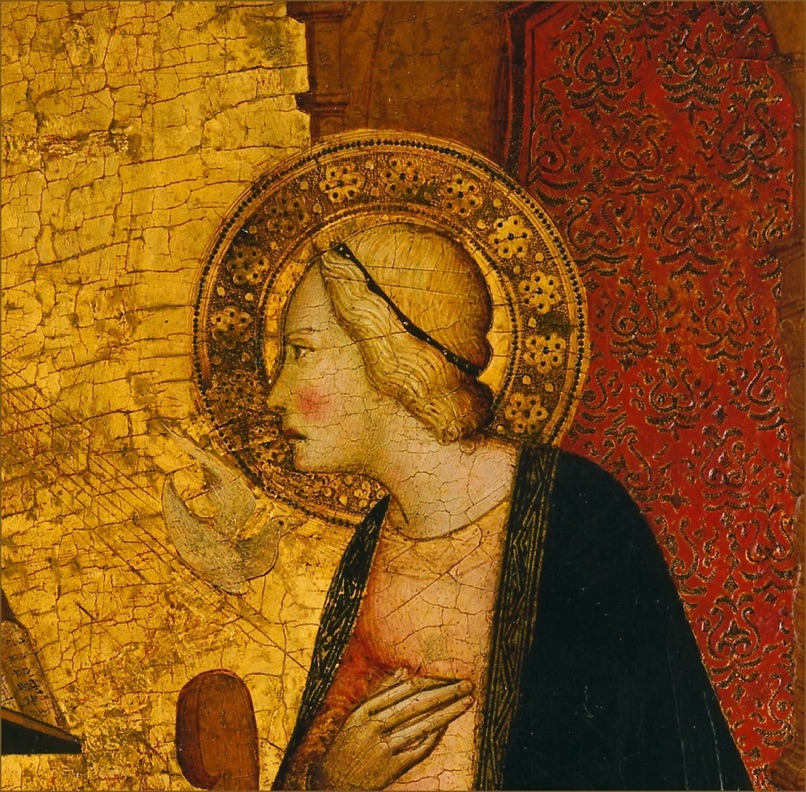The Digitalisation Project Castle Huis Bergh is the intellectual property of the Stichting Musick’s Monument. Ing Hans Meijer was responsible for the technical realisation; Dr Willem Kuiper for the scholarly input. Thanks are also due to the Anjer Cultuurfonds Gelderland; the Stichting de Verenigde Stichtingen “De Armenkorf” in Terborg and “Het Gasthuis te Silvolde”; Mrs P. Tijdink-Hermsen; Mrs L.J.C. Meijer-Kroonder; and the Giese family.




Panel
Gaddi (act. 1369-1396), Angelo, Italian School, Florence
Florentine painting
The Annunciation 1375-1400,
Perhaps the crown of right-hand section of an altarpiece, the messenger angel: nothing is known of the left side. From an English private collection.
The Christians’ intense interest in and devotion to Mary the mother of Christ dates from the Middle Ages. Here Gaddi, an early Florentine master from the school of Giotto and Cimabue, depicts an important moment in the Virgins life: the popular theme of the Annunciation. Annunciation means message, and annunciation scenes depict the virgin Mary receiving the announcement from the archangel Gabriel that she is to give birth to the Son of God. The angel is not visible, his place being on the left panel, which is now lost. We can, however, see the rays that radiate from him into Marys heart, carrying the dove that symbolizes the Holy Spirit. The Virgins hand touching her heart reveals her bewilderment at the sight of the heavenly creature. But although she is frightened, she tells the angel that she will submit to Gods will, as a true ancilla domini, a handmaiden of the Lord. According to Holy Scripture, Mary was reading when Gabriel visited her: note how the fingers of her left hand hold the page, as if she will in a moment return to her book and continue to read. The fact that the whole scene takes place inside is indicated by Marys chair: it looks like a small house with a little tiled roof. Mary wears the red tunic and blue cloak, her typical garb. Her holiness as the mother of Christ is indicated by the halo around her head. Artists made these haloes by applying discs of gold leaf to the surface of a panel; the flowery ornamentation inside the haloes is produced by pressing stamps on to the discs. These stamps were used more than once on several works of art. They therefore sometimes help identify the workplace in which a particular painting was produced. The gold leaf, the richly decorated chair and the expensive blue clothing lend the young Mary, a girl of humble birth, a majestic quality.

